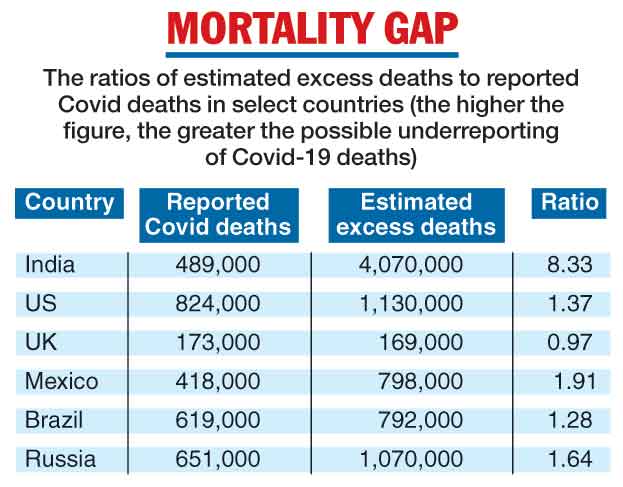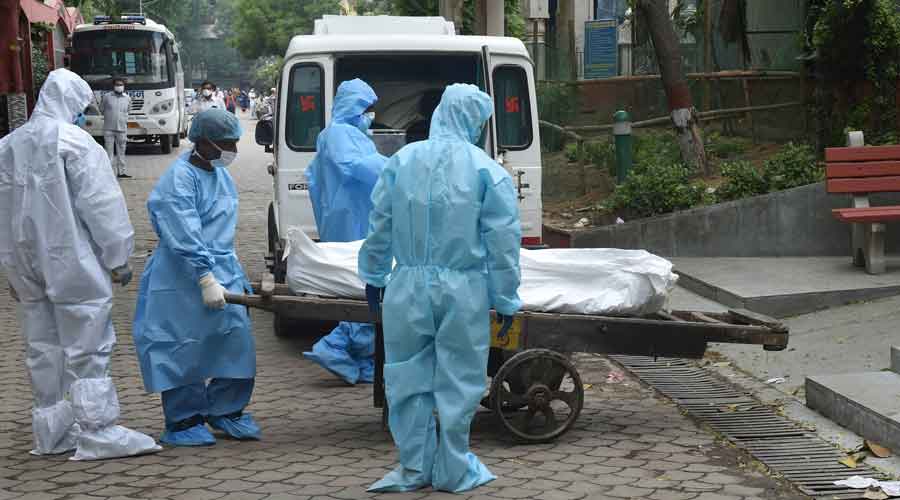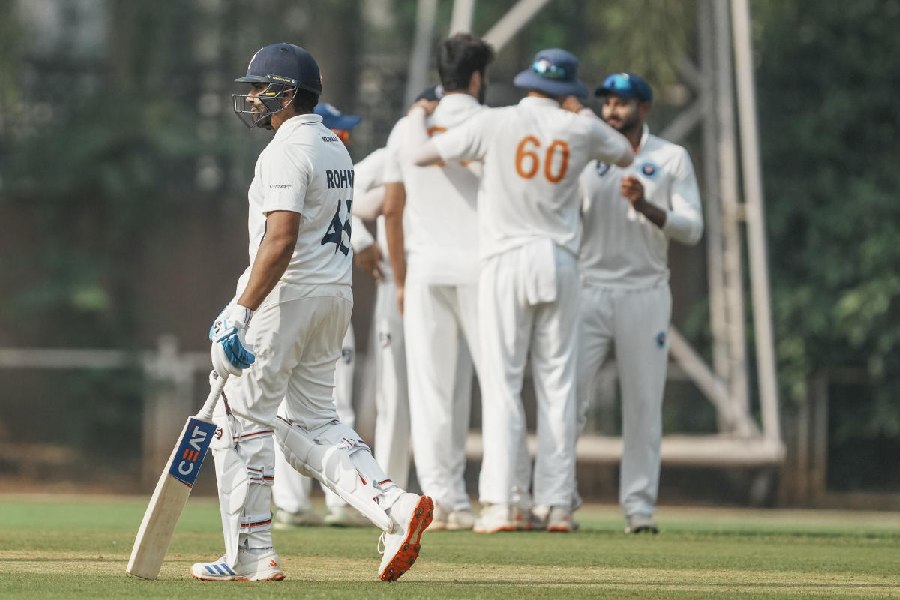The excess deaths the world has witnessed during the pandemic is three times its reported Covid-19 death toll, says a study published on Thursday that estimates that this figure for India is more than eight times the country’s official Covid death count.
“Excess” deaths refers to the number of deaths occurring over and above the expected deaths — based on yearly averages with population rise factored in — in an area over a particular period.
Since most excess deaths during the Covid-19 outbreak would be expected to have been caused by the pandemic, the findings of the estimation exercise imply that many countries, including India, grossly undercounted their Covid-19 death tolls.
The study, led by researchers from the Institute for Health Metrics and Evaluation (IHME) in the US, estimates that the excess deaths in India were over 4 million —more than eight times the country’s official Covid death count of 489,000. (See chart)

The study puts the excess deaths worldwide during the pandemic at over 18 million, compared to the 5.94 million Covid-19 deaths reported till December 31 last year.
However, the study does not say how many of the excess deaths were caused directly or indirectly by Covid-19, and some independent experts suggested that some of the excess deaths may be unrelated to the pandemic.
Official tolls attempt to capture only the direct Covid-19 deaths — those caused by the disease and its complications rather than, say, its economic impacts on households.
The IHME findings show that the ratio of excess deaths to official Covid-19 death tolls varies widely between countries, from 1.3 times in the US and 6 times in Japan to 8 times in India and 149 times in Nicaragua.
Within India, the ratio is 26.68 times the official figure in Bihar, 22.58 times in Uttar Pradesh, 11.14 times in Bengal and 1.96 times in Kerala.
The IHME’s excess death estimate for India is close to independent estimates by other researchers who used different methodologies. This, several health experts said, lends credence to concerns that an undercounting of deaths has masked the true severity of the epidemic in India.
Earlier this year, epidemiologist Prabhat Jha from the University of Toronto and his colleagues had put the count of excess deaths in India at 3.2 million, while demographer Christopher Guilmoto from
a French academic institution in New Delhi had calculated a figure of 3.2 million to 3.7 million.
“Our estimates suggest that the mortality impact from Covid-19 has been more devastating than the situation documented by official statistics,” Haidong Wang, a demographer and assistant professor at the IHME at the University of Washington, and his colleagues wrote in their paper.
“Further research will help reveal how many (of the excess) deaths were caused directly by Covid-19 and how many occurred as an indirect result of the pandemic,” a media release from The Lancet, which published the paper, said quoting Wang.
The Union health ministry has questioned the findings of such studies, issuing media releases that have underlined the assumptions or extrapolations involved in the research, and describing media reports on the findings as “baseless”, “misleading”, or “fallacious”.
The ministry has also asserted that India has a robust death reporting system and that the states have reported deaths in a “broadly transparent manner”.
It has described the IHME study as “speculative” and underlined that its data sources included non-peer-reviewed studies and media reports which raise “serious questions about the accuracy of the results of this statistical exercise”.
The ministry has also noted that the study’s authors have themselves admitted that “direct measurement would be preferable to modelled excess mortality estimates not based on all-cause mortality data which are usually more robust from the locations themselves”.
Guilmoto, who was not associated with the IHME study, said its findings “agree with previous estimates” and provide previously unavailable estimates for several states. But whether those excess deaths actually resulted from Covid-19 or something else remains unclear, he added.
“Is it Covid-related mortality (from) health system failure or is it something totally unrelated like the heat wave observed in Europe?” Guilmoto said.
The IHME study has documented spikes in deaths in many European countries triggered by heat waves during late July and early August 2020.
The IHME researchers have called for a strengthening of death registration systems around the world to improve understanding of the pandemic’s impacts. The gap between the estimated excess mortality and Covid-19 deaths has been much larger in South Asia and Sub-Saharan Africa compared with other regions.










